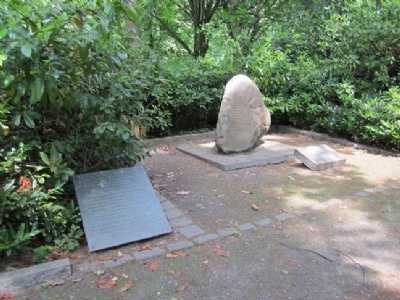Berlin – Marzahn
In 1936, in eastern Berlin, the Nazis set up a detention camp for the gypsies living or staying in Berlin. The reason was that two weeks later Berlin would host the summer olympics. The Nazis believed that the gypsies’ living and presence would be perceived as negative by the large number of foreign visitors who were expected to Berlin. The Olympics also gave the Nazis a reason to get the gypsies off the streets and detain them. A total of about 600 gypsies were arrested and taken to Marzahn. The Camp was closed in the spring of 1943 and the remaining gypsies were deported to Auschwitz.
Current status: Demolished with monument (2011).
Address: Otto-Rosenberg-Platz, 12681 Berlin (the monument is located in the cemtery).
Get there: Metro to Raoul Wallenberg Strasse Station.
Follow up in books: Lewy, Guenter: The Nazi Persecution of the Gypsies (2000).

Gypsies suffered much the same fate as the Jews between 1933 and 1945. The Nuremberg laws of 1935 also included the gypsies and they were deprived of their social, legal and political rights. After the outbreak of war, the gypsies, like the Jews, were put in ghettos and concentration camps. The gypsies were considered by the Nazis to be work-shy, anti-social, degenerated lifestyle and thus did not fit into the Nazi society. But the gypsies were also from a racial perspective of great interest for the Nazis. Nazi racial biologists carried out careful examinations of the gypsies. This is to find racial deviations from the Aryans that could be signs of, among other things, their antisocial behaviors. The Nazi leadership, however, did not fully agree on what should be done with the gypsies. SS chief Himmler opposed a complete annihilation of the gypsies and wanted to keep a small part for ”research purposes”.
On December 16, 1942, Himmler decided that all remaining gypsies in the German reich would be deported to Auschwitz and put into a special section (B II E), also called Zigeunerlager. The gypsies were given special treatment and did not have to work and could move freely in their section. SS doctor Dr Josef Mengele found the gypsies extremely interesting and visited the gypsy camp frequently in search of "research objects". Zigeunerlager existed until August 2 when the Nazis murdered the remaining 3000 gypsies. A total of 23,000 gypsies were deported to Auschwitz. The total number of gypsies murdered by the Nazis is extremely difficult to determine, but figures between 220,000 – 500,000 occur depending on the source.
The fate of gypsies under Nazism was marginalized for a long time in comparison with the fate of other groups, and this has its explanations. Gypsies had just as before the war problems after the war to gain acceptance in the communities they settled in (a problem that still exists). Their lives were seen with suspicion and they had difficulty getting a job and establishing themselves where they were. This meant that they traveled further and the fact that they were seen as a traveling people was also seen with suspicion, which meant that they ended up in a moment 22. They found it difficult to achieve positions in society where they could highlight their history between 1933 and 1945.